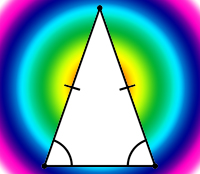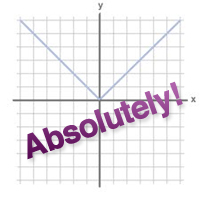 Today’s ACT question of the day involves a triangle with two equal sides. Triangles with two equal sides (and, therefore, two equal angles) are isosceles triangles. This is a key observation to make before taking on this problem.
Today’s ACT question of the day involves a triangle with two equal sides. Triangles with two equal sides (and, therefore, two equal angles) are isosceles triangles. This is a key observation to make before taking on this problem.
We have an isosceles triangle with only a base (length of 10). The height has been drawn in, bisecting the third angle and meeting the base at a right angle, but we don’t know its length. It would be nice if we did, right? Area of a triangle = 1/2 • base • height.
If we knew any of the angle measures, maybe we could luck out and find a 45-45-90 or 30-60-90 triangle somewhere in the diagram. We could also be sharp and recall one of our Pythagorean triplets: 3, 4, 5. Unfortunately, we don’t have any facts to support those guesses. We do have answer choices that work if you make those spurious assumptions, so be careful! Don’t make things up just to make the problem seem easier.
We could try to use trigonometry creatively to derive the hypotenuse, then work backward to find the height. Unfortunately, cos90 = 0, so that ends right there. If we knew the angle at the top of the triangle, we could use the sin of that angle • half the square of the length of one of the equal sides to find the area (works for all isosceles triangles)…but we have neither measure. What now?
Continue reading →
 Today’s official SAT question of the day is a math question that involves two expressions that have been set equal to each other. This medium-difficulty question looks tougher than it is, as long as we are careful with our signs and do not jump to conclusions. Let’s jump in.
Today’s official SAT question of the day is a math question that involves two expressions that have been set equal to each other. This medium-difficulty question looks tougher than it is, as long as we are careful with our signs and do not jump to conclusions. Let’s jump in.



